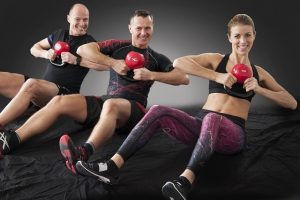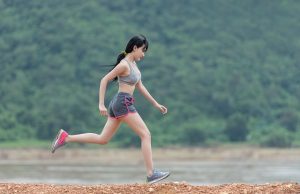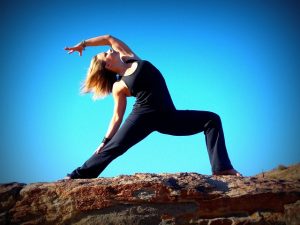
When you imagine a powerful, healthy, and agile body, you might conjure images of fully equipped gyms with heavy weights and machines. However, the foundation of fitness can often be built with the simplest tool available – your own body. Bodyweight training, a timeless exercise methodology, has been soaring in popularity due to its convenience and holistic benefits. This comprehensive guide will walk you through the realms of bodyweight training, ensuring you unlock your fitness potential in the most enjoyable and effective way possible.
The Essential Principles of Bodyweight Training
Before diving into routines and exercises, understanding the principles behind bodyweight training is essential for success. This method focuses not just on muscle development but also joint health, flexibility, and functional strength.
The Balance of Strength and Agility
Bodyweight exercises often require a combination of muscular strength and agility. Mastering movements like push-ups and squats demands attention to form, breathing, and controlled execution for maximum benefit.
The Role of Flexibility
Flexibility is crucial in bodyweight routines. Exercises such as lunges and reaching movements enhance your range of motion, reducing the risk of injury and improving overall performance.
Progression and Adaptation
As with any exercise routine, progression is key in bodyweight training. Start with basic exercises, and increasingly challenge yourself by adding reps, altering angles, or integrating dynamic movements as you grow stronger.
Creating an Enjoyable and Effective Bodyweight Routine
An effective bodyweight routine balances strengthening exercises with those that enhance flexibility and cardiovascular health.
Full Body Warm-up
Begin with dynamic stretches such as jumping jacks, arm circles, and leg swings. These movements prepare the muscles and joints for the workout ahead, significantly reducing the risk of injury.
Upper Body Workout
Push-ups, pull-ups, and dips target the upper body effectively. Vary these exercises to hit different muscle groups: wide grip, narrow grip, incline, and decline.
Lower Body Workout
Squats, lunges, and glute bridges activate the larger muscle groups in the lower body. These foundational movements are not only for building strength but also for boosting overall metabolism and athletic performance.
Core Engagement
A strong core is the pillar of a solid bodyweight workout. Incorporate planks, bicycle crunches, and leg raises to build a resilient midsection.
Flexibility and Cool Down
Wind down your workout with static stretching to relax the muscles and improve flexibility. Long-held stretches for the hamstrings, quadriceps, back, and arms will seal in the workout’s benefits.
Advanced Bodyweight Training Techniques
As you progress in your bodyweight training journey, advanced techniques will become integral to unlocking new fitness levels.
Plyometrics
Plyometric exercises such as jump squats and burpees introduce an explosive component, building power and burning fat rapidly.
Static Holds
Practicing isometric exercises like the plank, wall sit, or L-sit will challenge your muscles in a completely different way, enhancing endurance and mental grit.
Calisthenics
The world of calisthenics opens up once you’re comfortable with basic movements. Leveraging gravity and momentum, exercises like the muscle-up or human flag are not only fun but phenomenal for all-round strength and body control.
Harnessing the Enjoyment Factor
Enjoyment is a powerful motivator in sustaining a fitness routine. Explore ways to make bodyweight training fun:
Playful Challenges
Set personal challenges or engage in friendly competition with others to push your limits and keep workouts exciting.
Varying the Scenery
Take your workout outdoors, to a park, or a community space. A change in environment can provide a fresh burst of motivation.
Incorporating Technology
Use apps and online communities to track your progress, learn new exercises, and connect with like-minded individuals for inspiration and accountability.
Embracing Flexibility in Your Routine
Bodyweight training shines with its adaptability. Regardless of your schedule or access to a gym, these exercises can be performed almost anywhere.
Workout Anywhere
From the living room to a hotel, bodyweight exercises are not confined by location. This flexibility ensures you can stay consistent with your training.
Adaptable Intensity
Depending on your energy levels and time constraints, you can adjust the intensity of your workout. Even a quick 20-minute session can be effective.
Integrating Other Fitness Forms
Combine bodyweight training with yoga, running, or other sports for a well-rounded approach to health and fitness.
Conclusion
Bodyweight training is not just a convenient and inexpensive way to exercise, it’s a dynamic and enjoyable approach to achieving phenomenal fitness results. By mastering the art of bodyweight exercises, you unlock a world of possibilities where your own body becomes the gym. Explore the myriad of movements, embrace the flexibility it offers, and enjoy the journey to a healthier, stronger you.








